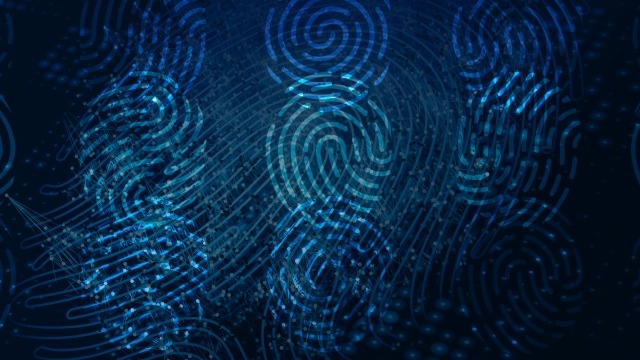Gender Bias in the Courtroom: Overcoming Perceptions and the Data that Could Displace the Bias
The Backstory
It’s very likely that every female or minority professional has their own anecdote. Personally speaking, one has stuck with me more than others. A few years back, I stood in a row of my colleagues at the end of a meeting, waiting to shake hands with the gentleman from another professional services firm who had led the meeting. On my left was a male who was my senior, and on my right a male who was my junior. As the gentleman made his way down the row to shake each of our hands, he shook the hand of the male on my left, skipped over me, shook the hand of the male on my right then finally returned to shake my hand last.
While this is merely one example, experiences like this, as well as seemingly more present female empowerment articles in my LinkedIn news feed, kickstarted my research into courtroom gender bias to both understand the bias faced by female lawyers and explore whether the same gender bias impacts expert witnesses such as myself. As discussed in this article, it is clear that gender bias in the courtroom is both discouraging and pervasive; however, a recent study by legal analytics firm Premonition provides a silver lining of data that has the power to upend this bias. But more on that later.
The Unsettling Reality for Female Lawyers
An October 2018 Forbes article cites a recent survey completed by the American Bar Association’s Commission on Women in the profession and the Minority Corporate Counsel Association.[1] The study surveyed 2,827 lawyers and found that, in addition to lower pay and opportunities for advancement, female lawyers (and particularly those who are also minorities) are more likely than their male counterparts:
- To be interrupted;
- To be mistaken for non-lawyers, including custodial staff, administrative staff or court personnel, even after making partner at their firms;
- To do more office housework, such as meeting scheduling and party planning, and even cleaning up food after a meeting; and
- To have less access to prime assignments.
As I read the Forbes article, I found myself nodding my head. I too have been mistaken for administrative staff and I recall my frustration. When my male partner inadvertently drove to the wrong location for a meeting that he had scheduled at our office, his guest arrived and was quite insistent that I must have botched the calendar entry for my partner. It offered me minor solace that he felt quite embarrassed when I informed him that I was not my partner’s administrative assistant.
Gender bias seems even more unfair in the courtroom itself where double standards abound. A 2018 study conducted by Arizona State University dissected perceptions of six trial lawyers, three male and three female, as they reenacted an aggressive closing argument from a real court case.[2] Participants in the study described the male lawyers as “commanding, powerful, competent, and hirable” while the females were found to be “shrill, hysterical, grating, and ineffective.” Unfortunately, since the courtroom is a venue where results are inherently driven by a judge and jury’s perceptions, female lawyers are often left to face the reality of such perceptions and adapt accordingly.
The Extension to Female Expert Witnesses
The necessity to adapt to biased perceptions is not limited to lawyers, but extends to expert witnesses as well. An astounding 83% of expert witnesses retained are male.[3] Bloomberg BNA reported in August 2017:
- Gender bias in the legal profession isn’t new. Its pernicious reach spreads everywhere.
- But nowhere is it more pronounced than among the ranks of female expert witnesses who must surmount multiple layers of ingrained stereotypes every day to do their jobs.
- Women must scale heights in their chosen field to qualify as a trial expert. They then need to persuade mostly male attorneys they should be hired and retained.
- And to survive, they must consistently convince skeptical jurors that they are more knowledgeable, credible, confident and even likeable, than their opposing, usually male, counterparts.
Certainly, all expert witnesses should be expected to be knowledgeable, credible and confident, but let’s talk about likability. Tess Neal, Assistant Professor of Psychology at Arizona State University, explains that in order to persuade jurors, female experts must not only uphold their occupational role as “competent and knowledgeable,” but also uphold their gender role as “warm and likeable.”[4] According to Neal, male experts face only the former, without likeability as a requirement.
What this, as well as the prior study referenced regarding trial lawyers, demonstrate is that women in the courtroom are confronted with an additional burden not faced by men. Andrea Kramer, partner at McDermott Will & Emery and a nationally-recognized authority on gender communication, was a guest speaker on the topic at my firm last October. In Kramer’s book (co-authored with her husband Alton Harris), this is described as the Goldilocks Dilemma – that a woman who displays traits of a strong leader may be seen as strident or unlikeable, but a woman who displays traits that are more traditionally “feminine” risks being seen as lacking competence and leadership potential.[5] The key, say Kramer and Harris, is to develop “attuned gender communication,” both verbal and nonverbal, to find the right balance…. at least until a time in the future when gender bias dissipates. I’ve read this concept also described as the “iron hand in a velvet glove” method.[6]
The Silver Lining
Certainly, the gender bias that exists in the courtroom is unsettling. But is it warranted? Intuition says no, but as a professional who thrives in numbers and data, I was pleasantly surprised to stumble across recent data published by Miami-based legal analytics firm Premonition.[7] Premonition co-founder and CEO Guy Kurlandski summarizes the study’s results, “If female attorneys were compensated according to how often they actually win cases, they’d be paid more than men. We just ran the biggest legal study on gender of all time, and at every level of practice, women came out ahead.”[8]
Premonition’s Women in Law report begins by citing a gender study on attorney billings conducted by Sky Analytics which found:
- Women are more likely to be assigned to assignments with less than 5 timekeepers compared to higher value assignments with more than 20 timekeepers;
- Women are more likely to not bill their time, with only 59% of female time billed compared to 66% for males;
- Certain tasks tended to be billed more frequently by women than men, including “female” jobs such as word processing and fact investigation/development, compared to “male” jobs such as analysis/strategy and international patent prosecution;
- 6% of male lawyers billed over $800 per hour compared to only 2% of females; and
- On average, female partners earned 10% and 12% less than male counterparts at large and small firms, respectively.
I promise, there is a silver lining.
Armed with the findings from Sky Analytics gender study, Premonition set out to unpack “the truth behind the myth” with respect to the performance of female and male litigators. Premonition utilized its vast archive of courtroom data and proprietary artificial intelligence to study the win rates of litigators across 120,000 cases, finding:[9]
- Female partners in Big Law outperformed male counterparts in court by nearly 13%; and
- Female associates outperformed male counterparts by nearly 3%,
Premonition offers several possible explanations for the win gap, largely attributing it to “survival of the fittest” with only the best and most elite female lawyers surviving to outperform a wider pool of males, but also citing a study which found that “female lawyers are somewhat less overconfident in their predictions of case outcomes than males, meaning they are less likely to bring losing cases to court while preparing more diligently for the cases they do litigate.”
The Future is Bright
Premonition’s report includes a message from Shawnna Hoffman, Co-Leader of IBM’s Cognitive Legal Practice. Hoffman praised Premonition’s findings:
“I am proud to share with you that the challenge [of predicting winning lawyers] has been met by Premonition with surprise results which, in my opinion, promote new insight into diversity and how inclusion of women is smart business. After reading this report, I believe you will clearly see that a legal strategy that includes women is not only the right thing to do, but it provides a competitive advantage.”
Where does all of this leave us? Never has there been a time more ripe for upending courtroom bias than now. Inclusive diversity initiatives are abundant across law firms and corporations, and data such as that published by Premonition is bound to continue to demonstrate the merits of female lawyers and expert witnesses alike. It is time to put the anecdotes, discouraging realities, and biased perceptions into the past, and instead move toward a future that acknowledges the advantages that females can provide across all areas of the courtroom. Early in my career I was told that perceptions become reality. But times are changing, and I believe the reality of women’s contributions in the courtroom has the power to become the new perception.
[1] Elsesser, Kim. “Female Lawyers Face Widespread Gender Bias, According To New Study.” Forbes Magazine, 5 Oct. 2018, www.forbes.com/sites/kimelsesser/2018/10/01/female-lawyers-face-widespread-gender-bias-according-to-new-study/#38d36d284b55.
[2] Sexton, Chrissy. “Gender Bias Affects How Lawyers Are Viewed in the Courtroom.” Earth.com, 25 June 2018, www.earth.com/news/gender-bias-lawyers-courtroom/.
[3] O'Neill, Joseph. “Expert Witnesses: Battle of the Sexes.” The Expert Institute, 29 Mar. 2017, www.theexpertinstitute.com/expert-witnesses-battle-sexes/.
[4] Greene, Rosalind R., and Jan Mills Spaeth. “Jack or Jackie? The Relationship of Gender and Expert Witness Testimony.” Arizona Attorney (Expert Witness Special Issue), Mar. 2018.
[5] Kramer, Andrea S., and Alton B. Harris. Breaking through Bias: Communication Techniques for Women to Succeed at Work. Bibliomotion, Inc., 2016.
[6] Kerpen, Carrie. Work It: Secrets for Success from the Boldest Women in Business. A TarcherPerigee Book, 2018.
[7] “Women in Law: Who makes the better lawyer? Male or Female?” as obtained from Premonition, premonition.ai/reports/.
[8] “Women Lawyers Significantly Better, Study Finds.” Premonition, 4 Apr. 2018, premonition.ai/women_lawyers_significantly_better_study_finds/.
[9] Specifically, Premonition measures an attorney’s win rate based upon cases fully litigated as well as various forms of case discharges, with judgments a “win” for plaintiffs, dismissals a “win” for defendants, and settlements categorized consistent with local court rules (generally as dismissals).


